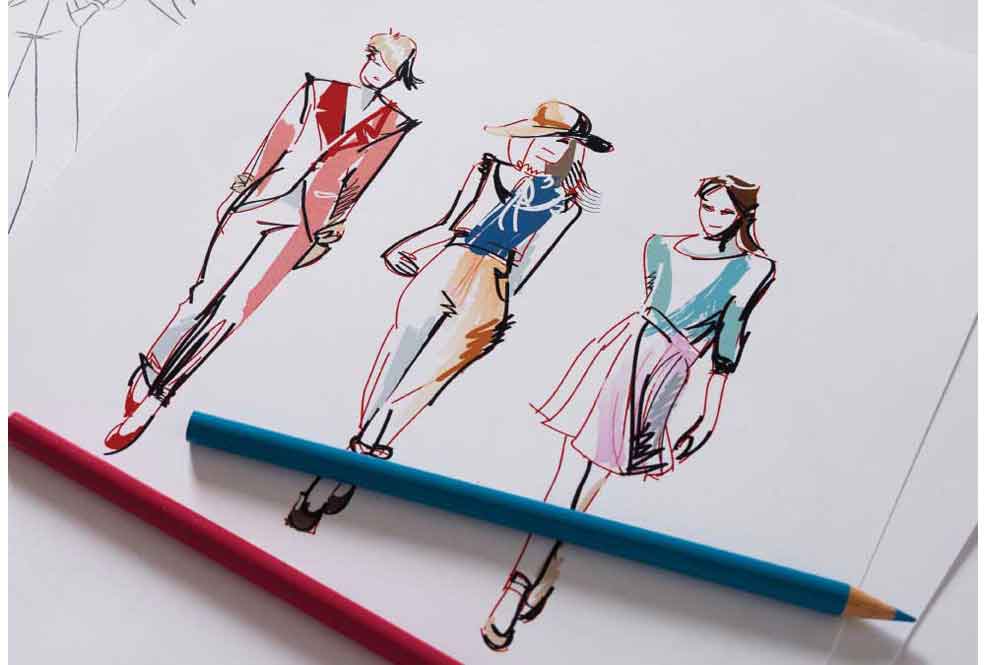All about fashion designing
Featured
- Get link
- X
- Other Apps
The Fashion Design Process: Research and Inspiration

The fashion design process is a multifaceted journey that requires creativity, attention to detail, and most importantly, deep insight into the ever-evolving tastes of consumers. This process often begins with research and inspiration, which forms the foundation for any successful collection. Designers must understand what's happening in the fashion world, both on the runway and in everyday life, in order to craft designs that will resonate with their audience.
1. Trends and Forecasting: Understanding What’s Next
The first step in the design process is to look ahead—to forecast the styles, colors, materials, and general aesthetic that will define the next season. Trend forecasting is an essential part of this process, and it often involves a combination of market research, analysis of past fashion cycles, and observing cultural shifts. Designers need to predict what consumers will want, not just today, but months or even a year in advance.
a. Sources of Trend Forecasting
Trend forecasting is a blend of science, art, and intuition. Designers often turn to specialized fashion forecasting agencies like WGSN, Trendstop, and The Future Laboratory, which provide detailed reports, insights, and visual inspiration based on global trends. These agencies analyze data from various sectors such as politics, economics, and technology to understand how these factors will influence consumer behavior and, in turn, fashion choices.
Fashion forecasting isn't just about predicting colors and fabrics; it also involves understanding the broader context—how social, political, and economic factors will impact what people wear. For example, after a year of lockdowns and social distancing, comfortable, versatile clothing became a priority for many. This shift has influenced the rise of athleisure and loungewear as dominant trends.
b. Fashion Shows and Exhibitions
Fashion shows, exhibitions, and trade fairs are key venues where designers can gather valuable inspiration. The biggest names in the industry often unveil their collections at prestigious events like Paris Fashion Week, New York Fashion Week, and Milan Fashion Week. These events serve as a platform for designers to experiment with bold, avant-garde styles that may eventually trickle down to mass-market retailers.
For designers, attending these shows is crucial—not only to see what other designers are doing but also to sense the mood of the industry and the direction it’s heading. Exhibitions and trade fairs like Première Vision in Paris or Texworld USA also provide designers with access to the latest textiles, materials, and production techniques, which can spark new ideas and innovations.
c. Consumer Behavior Analysis
Understanding consumer behavior is equally important when forecasting trends. Designers need to grasp how their target market behaves, what they want, and how their preferences might evolve. For instance, consumers’ increasing concern about sustainability and ethical fashion has led to the rise of brands and collections that focus on eco-friendly practices. By studying shifts in consumer sentiment, designers can adjust their designs to meet changing demands.
Modern technology and social media platforms such as Instagram, TikTok, and Pinterest also serve as valuable tools for designers to track consumer behavior and identify emerging trends. Social media allows for instant feedback and real-time trend spotting, giving designers a pulse on what’s gaining traction among fashion enthusiasts globally.
- Get link
- X
- Other Apps
Popular Posts
Innovations in Fashion Design: The Role of Technology
- Get link
- X
- Other Apps
Comments
Post a Comment